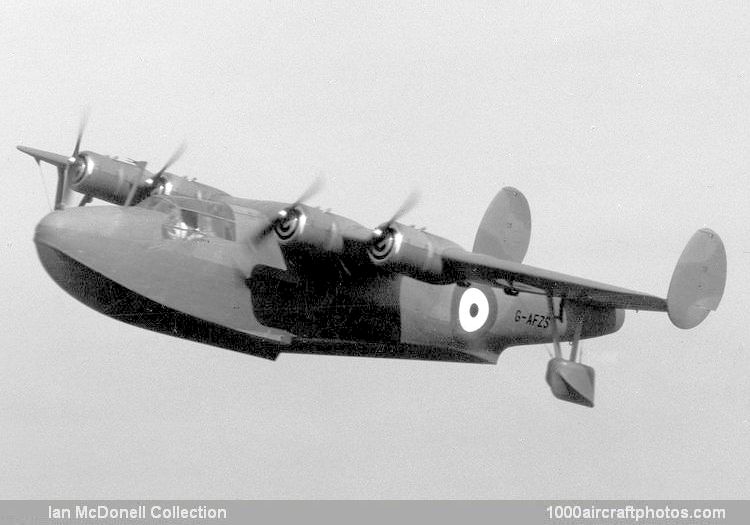09/15/2020. Remarks by Johan Visschedijk: "In 1939, as part of a program connected with the design of large flying boats, Saunders-Roe built a small four-engined flying boat, the A.37, which subsequently became known unofficially as the Shrimp. The A.37 was intended to provide the answers to various aerodynamic and hydrodynamic problems, and to test various hull bottoms and step positions. The A.37 was interesting in that it reflected a current trend by aircraft manufacturers to utilize half-scale flying models of their larger designs in order to avoid the expense of a full-size prototype until the success or otherwise of the design had been checked. Examples of this pre-prototype testing were the Short Scion Senior for the Empire Flying Boat, and a half-scale model of the Stirling bomber. Registered G-AFZS, the A.37 was flown for the first time in 1940 with four 88 hp Pobjoy Niagara III seven-cylinder air-cooled radial engines, these being the smallest engines available.
The A.37 was, in fact, a half-scale model of a large maritime reconnaissance flying boat designed to specification R.3/38 subsequently superseded by R.5/39, and the cabin accommodated the pilot and technical observer in tandem seats. The hull was of all-metal construction while the wings and tail assembly were of wood with plywood and fabric skinning. The four engines, mounted on metal bearers in the leading edges of the wings, were faired into the wing surfaces by streamlined nacelles. The fixed wing tip floats were scaled-down replicas of the retractable floats to have been featured by the full-scale aircraft. The A.37 was tested by the Marine Aircraft Experimental Establishment at the beginning of 1941, and the flying qualities of the aircraft proved to be exceptionally good, the controls being light and fully responsive over the whole speed range. The clean hull proved particularly seaworthy for its size, and the handling qualities on the water were excellent.
With the replacement of specification R.5/39 by R.14/40, the A.37 was used for the Short Shetland flying boat, a joint Short/Saunders-Roe project. In order to determine the stability characteristics of the Shetland's hull, the A.37 was modified to take a 1:2.75 scale model of the Shetland hull, and attitude, acceleration and stability characteristics were measured in steady runs and take offs at weights of 5,700 lb (2,585 kg) and 6,250 lb (2,835 kg). These tests were undertaken at MAEE Helensburgh late in 1942, and the A.37 was later fitted with scaled-down replicas of the Shetland's tail assembly and floats, and tested at 5,600 lb. and 5,700 lb. until the autumn of 1944 under various conditions, including rough sea conditions with winds up to 28 m.p.h., and cross-wind taxying. During these tests the civil registration was replaced by the serial TK580. The aircraft was eventually broken up in 1946."
